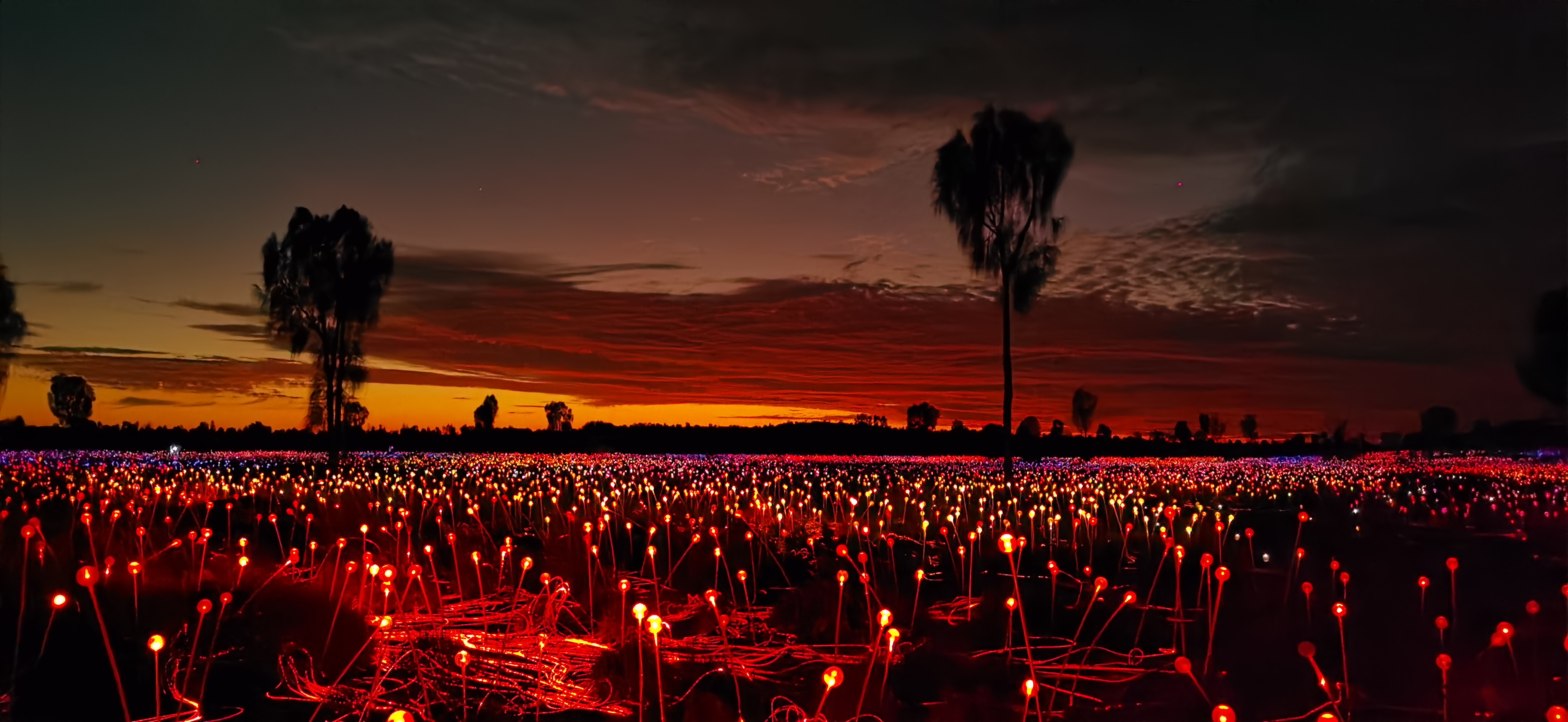
Uluru, one of the most famous rock formations in the world, and one of Australia’s most essential sites/sights, stands solidly in the scrubby dessert of the Northern Territory. Its presence is really like no other natural landmark in the country: powerful, spiritual, beautiful, inspiring. Located about 335km south west of Alice Springs, it is one of the most culturally significant and unique pieces of nature one can ever see in Australia.
Noted for its spectacular red glow at both sunrise and sunset, the sandstone beauty is obviously something every Australian should see at least once in their lifetime. I had a chance to see it for my very first time with Huawei, who took a whole handful of media and influencers up to the NT to (respectfully – don’t @ me) photograph Uluru and get hands-on with their new P30 and P30 Pro smartphones, so they can see for themselves just how game-changing this new series is when it comes to mobile photography.
I’ve already introduced the specs and need-to-know details on the phone HERE, so this will be strictly about the camera (specifically, the P30 Pro) and its related software.
Here’s What the Camera Does
While the P30 has a new-gen Leica Triple Camera system on its rear, the Pro takes that a step further with a quad system. This is made up of a 40MP SuperSpectrum sensor, (27mm, f/1.6, OIS + AI) a 20MP ultrawide angle lens (16mm, f/2.2, AI), a 8MP telephoto lens (125mm, f/3.4, OIS + AI) and – exclusive to the Pro – a trendy Time-of-Flight (AI) lens which uses infrared to accurately determine depth and improve AR and 3D experiences. This is also a big benefit for portrait mode, as theoretically the camera is better equipped to distinguish objects at varying distances, so you’ll ideally get a much better blur as foreground is better picked apart from background.
The 32MP Selfie Camera is just the icing on the cake, and while the P30 Series doesn’t try and mirror one of the best and most defining features of the recent Google Pixel 3 XL (that being the front-facing wide angle lens for wide-angle selfies), the impressive resolution, coupled with Super HDR shot and Super Low Light shot options, is very welcome.
Let’s get at that primary rear lens for a second. The hard-working 40MP camera means that even in normal mode, the Pro is well equipped for most jobs. What Huawei have done is replaced the RGB sensor, found in most smartphones to date, and instead used the new RYYB “SuperSpectrum” imaging sensor, which has been in the works at Huawei for over two years. This means that instead of green, blue and red sub-pixels, the camera switches over to the yellow, blue and red set-up, which leads to the lofty promise of letting up to 40% more light in, as compared to RGB; hence, more detail. That’s the highest ever light sensitivity on a smartphone camera. In fact, the Pro comes with an ISO sensitivity ceiling of – take a deep breathe – 409,600. As a means of comparison, the P20 Pro – lauded for its camera – had an ISO ceiling of 102,400.
The use of AI on all four lenses furthers Huawei’s faith in AI-assisted photography, most noticeably at work when it helps reduce any exaggerated highlights and brighten up shadows. The latter works like a charm, and is remarkably consistent, but the former I found – from my short time spent with the device – isn’t as reliable.
Videography on this thing also scores points on paper. Both the P30 and P30 Pro can record video up to 4K at 30fps (or 1080p at 60fps). That’s expected, but the surprise here is the future update of “Dual Video” mode (release date unconfirmed). This neat option will allow users to record video with the primary SuperSpectrum sensor and the telephoto lens at the same time, after which videos are saved side-by-side in one file. Users can choose between these two perspectives when uploading to social media.
Working our way up to the hero features, we have Night Mode. It’s similar to the brilliant Night Sight in the Pixel 3 XL, but of course Huawei have to put their best foot forward since they really finessed low light photography with the P20 series. More on this later.
If there is only going to be one ultimate selling point for the Pro’s camera it is going to be the new “periscope” zoom. This promises 5X optical zoom, 10X lossless hybrid zoom, and a massive 50X digital zoom. That’s insane, and not something anyone would have reasonably expected from a smartphone until now.
Putting it to the Test
I am by no means a professional photographer, so luckily this aforementioned journey up to Uluru was alongside famed Getty photographer and Creative Director James D. Morgan whose work (shot on the P30 Pro) I also include here.
This moon image below gives you a better idea of what 50X zoom looks like.
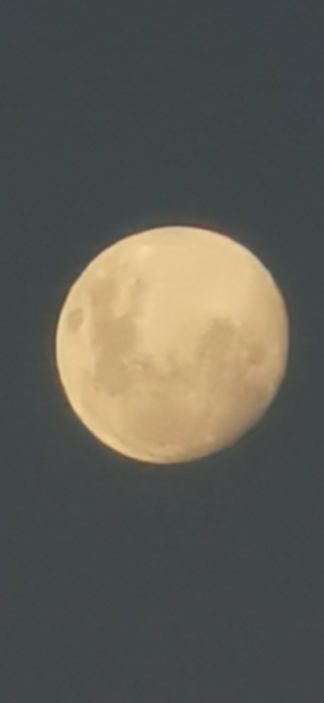
At 50X zoom the camera is completely unsteady and even minor shakes of the hand can have the biggest effect. This is why a tripod is recommended, but for this I just knelt down and used a sharpened log to help stabilise a bit. I didn’t spend enough time with the phone to fully test out just how effective AI and OIS are at stabilising both photo and video, but will get to do so on full review.
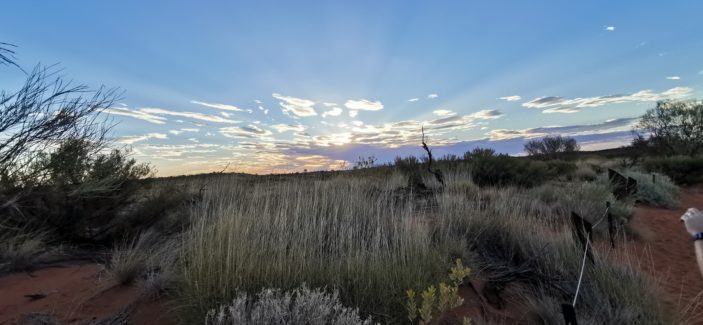
As you can see from above, the Pro is able to capture a huge amount of detail in the foreground, really fleshing out the bush and giving a crisp, clear image.
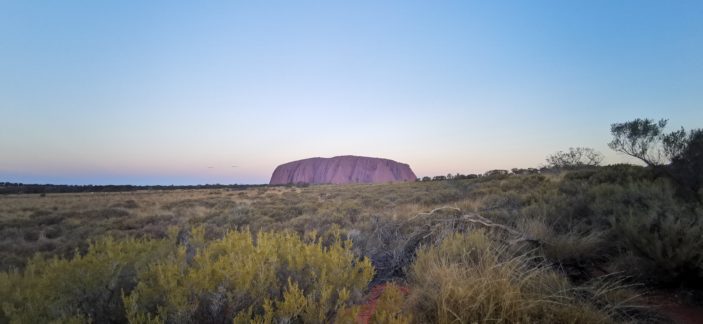
The above is shot on the wide-angle in the standard camera mode. All you have to do from the moment you open the camera app is simply pinch to zoom out completely and the phone automatically switches to this beautiful ultra wide-angle, which packs plenty of detail into the photo. This was taken just before sunset, when Uluru is still more brownish than red.
Most notably, Huawei’s software includes a “Pro Mode” which allows the user to tweak all the essentials of photography including ISO. We’ll also get deeper into that in our full review. Auto mode will do just fine with most situations, but you’re really going to want to go into Pro Mode and play around to get the best results. For example, look at the below two photos, one taken by me – a tragic amateur – and one taken by James – a seasoned veteran using the Pro mode.
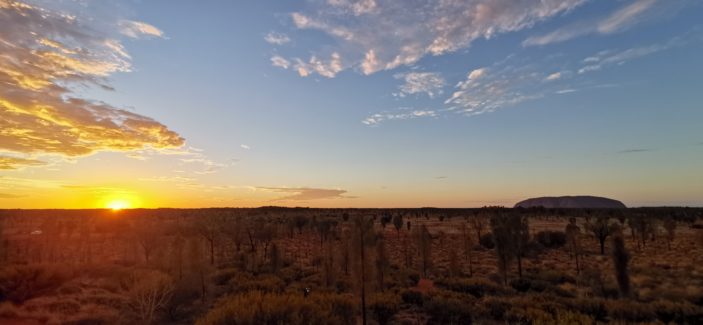
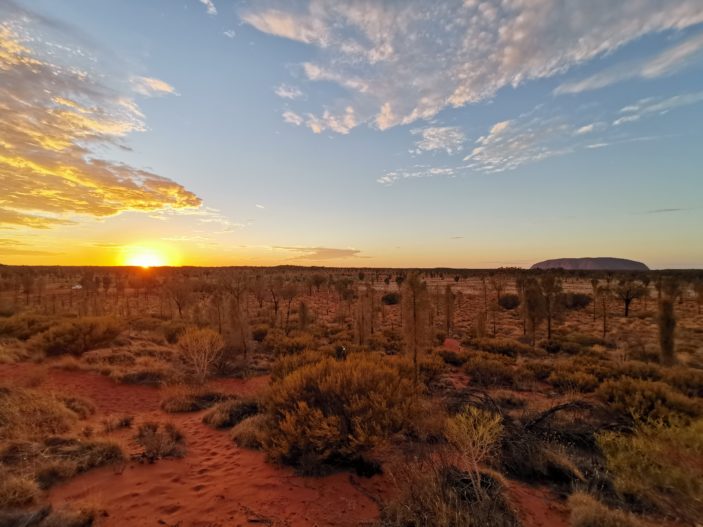
And that’s just it with the camera: you have to work harder to get that extra special shot. As mentioned above, auto mode will do just fine for most people, but the Pro gives you the options to get a shot that is that much better, rewarding you for your efforts and truly showcasing what this magnificent camera is capable of.
This is most obvious, I found, in Night Mode.
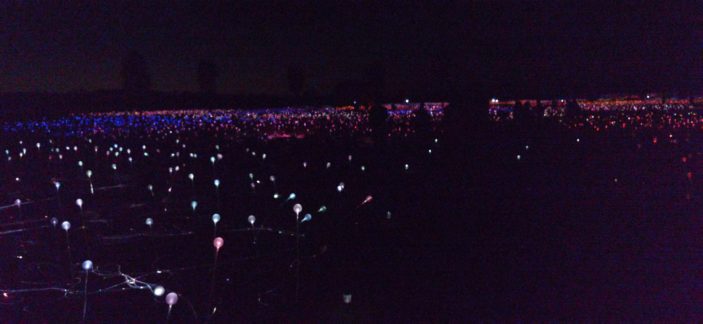
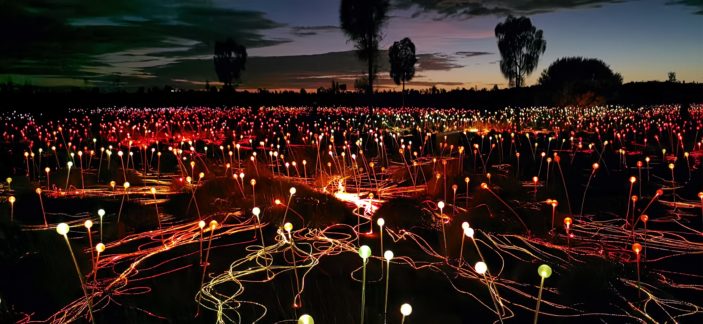
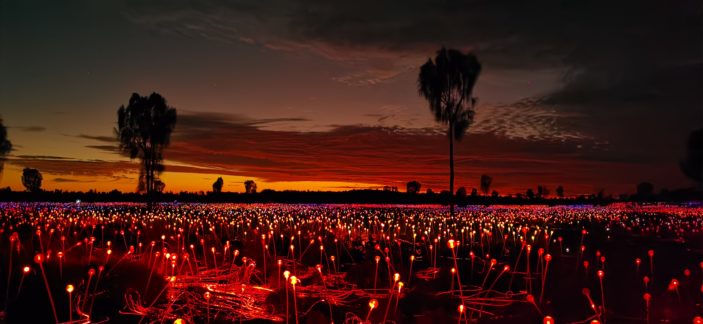
Above is a terrible shot by me, a decent shot by me, and an incredible shot by James; all of Bruce Munro’s awe-inspiring Field of Lights. From memory, they are all shot with Night Mode. The first one was interrupted, while on the second I saw it through. Now, I won’t get to fully test out the Night Mode as compared to Google’s Night Sight until I get my hands on a review unit, but as someone who uses Pixel regularly, this is what I’ve noticed:
Again, you have to work harder to get that extra special shot. Night Mode here works fantastic, but – from a purely mental comparison – it’s less consistent than Night Sight. With Night Sight, it works faster and usually produces amazing results, but it tends to overexpose at times. Night Mode on the P30 Pro seems to have a more complicated computational process, working harder and therefore taking longer (you have to steady for around 7 seconds in a very dark setting), which means that there’s more room for error. When the results are bad, they’re average; when they’re good, they are jaw-dropping and pretty much magic.
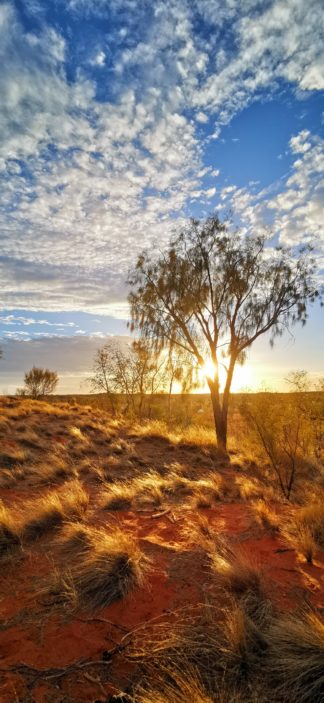
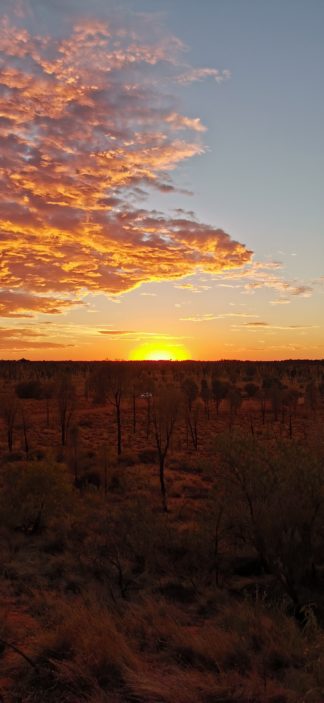
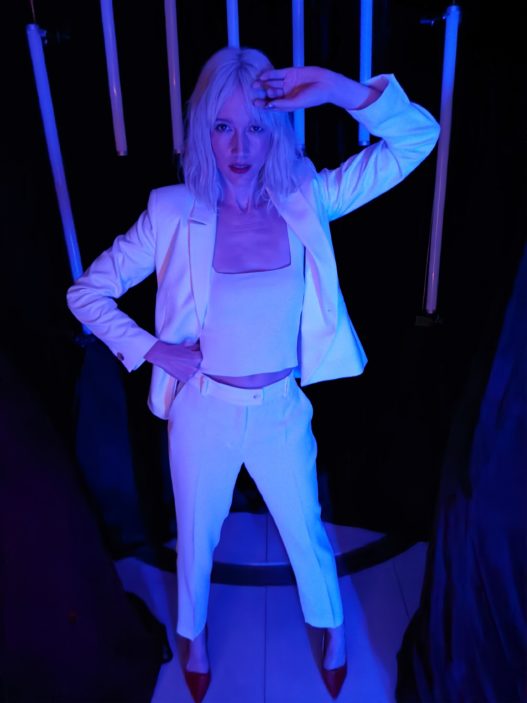
The last of those four photos was taken back in Sydney at a separate event, also on the P30 Pro. In auto mode it was taken of a model in a pitch black room, just so Huawei could show of their low-light wizadry.

Portrait mode picks up a massive amount of detail. Perfect for sliced fruit photographers.
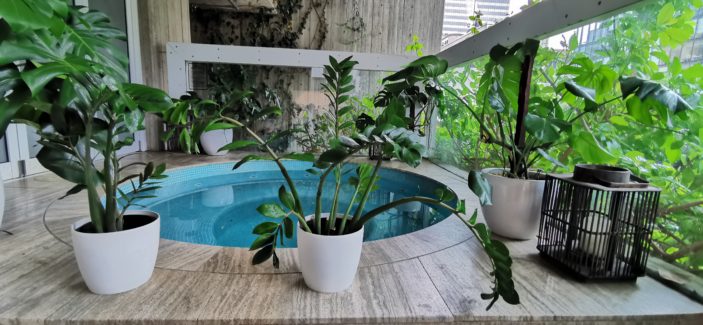
I can see real estate agents loving this camera.
—
Stay tuned for our full review and more content coming from our writer who is on-ground at the announce event in Paris.
Huawei P30 (from $1099 AUD) and P30 Pro (from $1599 AUD) will be released in Australia on Tuesday 16th April. Pre-orders (at https://www.huaweipromotions.com.au/) are now open and come with a complimentary Sonos One.
Feature image by James D Morgan.
